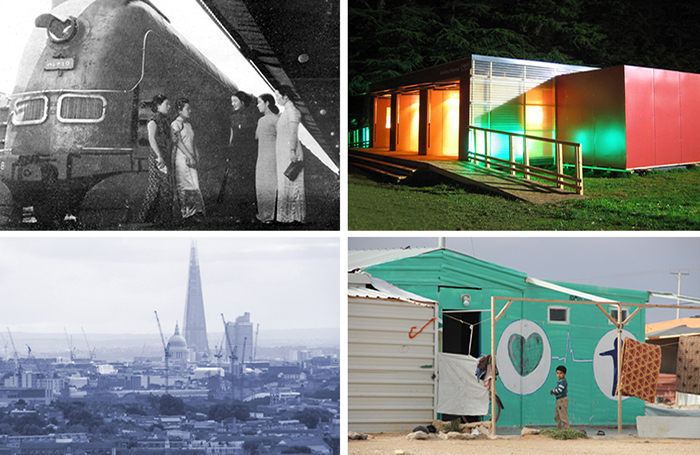The Royal Institute of British Architects (RIBA) has tonight (5 December 2017) announced the winner of the 2017 RIBA President’s Medal for Research for the best research project, submitted to the RIBA President’s Awards for Research, also revealed this evening.

The 2017 RIBA President’s Medal for Research was presented to Dr Edward Denison of the Bartlett School of Architecture, UCL – for the second time – and Guang Yu Ren, an independent researcher based in the UK, for their project: Ultra Modernism in Manchuria.
The paper explores ‘Ultra-Modernism’, an ideological term employed to describe Japan’s encounter with modernity and its distinction from western precedents/constructed cannons, deemed historically and intellectually impartial.
‘Ultra-Modernism’ refers to the speed and intensity of the development of the north-eastern region of China formerly known as Manchuria before the Second World War, when Japan’s attempts to build an empire throughout the 1930s prompted the construction of over one hundred towns and cities in a new state they named Manchukuo.
The medal winner was selected from winners of the 2017 RIBA Research Awards, in four categories: Cities and Community, Design and Technical, History and Theory, and the Annual Theme which this year was ‘Housing’.
The winners of the 2017 RIBA President’s Awards for Research are:
History and Theory:
Dr Edward Denison, Bartlett School of Architecture, UCL, UK and Guang Yu Ren, Independent Researcher, UK for 'Ultra Modernism in Manchuria'
Design and Technical:
Dr Steven Coombs, Welsh School of Architecture, Cardiff University, UK for 'The Development of the Building Envelope Using Welsh-Grown Timber: A study Through Prototyping'
Cities and Community:
Jane Manning, George Garofalakis, Antony Rifkin & Geoff Noble, Allies and Morrison LLP, UK for 'London’s Local Character and Density'
Annual Theme: Housing:
Dr Dima Albadra, Prof David Coley & Dr Jason Hart, University of Bath, UK for 'Toward Healthy Housing for the Displaced'
Dr Kat Martindale, RIBA Head of Research and Innovation, said: “We were delighted to receive submissions from around the world again indicating the diverse landscape of architecture research across academia and practice. It made for a competitive and fascinating shortlist and our congratulations go to tonight’s winners and medallists Dr Edward Denison and Guang Yu Ren.”
The 2017 President’s Awards for Research received 51 submissions from 11 countries. The 2017, RIBA President's Awards for Research Book of Abstracts is available here: RIBA President's Awards for Research, Book of Abstracts, 2017
The theme and dates for 2018 President’s Awards for Research will be announced in February.
ENDS
Notes to editors:
1. For further press information contact: Abigail Chiswell-White Abigail.Chiswell-White@riba.org 020 7307 3811
2. For images relating to each project: https://riba.box.com/v/ResearchAwards2017
3. For general enquiries about the awards contact research@riba.org
4. The RIBA President's Awards for Research were established in order to reward and encourage outstanding research in architecture carried out by students, academics and practitioners.
5. The Royal Institute of British Architects (@RIBA) is a global professional membership body that serves its members and society in order to deliver better buildings and places, stronger communities and a sustainable environment. www.architecture.com









